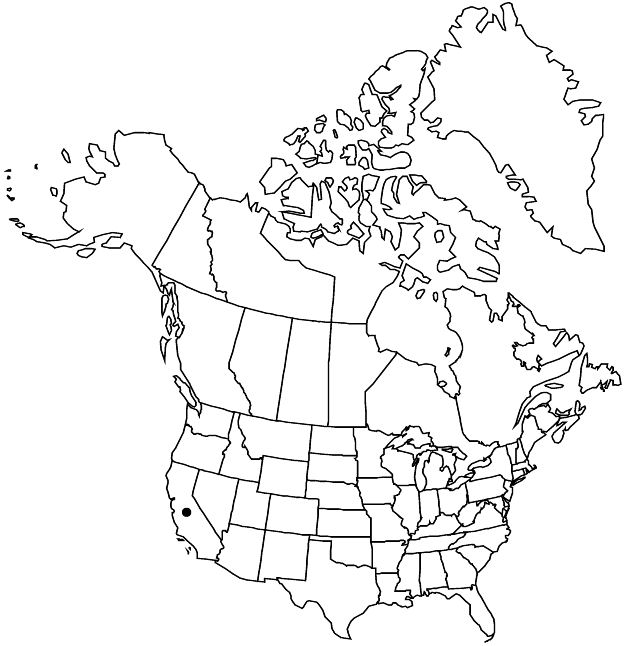Prunus eremophila
Madroño 49: 285, figs. 1, 2. 2003.
Shrubs, suckering unknown, much branched, 10–25 dm, weakly thorny. Twigs with axillary end buds, canescent. Leaves deciduous; petiole 0.5–3(–5) mm, hairy, eglandular; blade ovate, obovate, or spatulate, 0.5–2(–3) × 0.2–1(–2) cm, base cuneate to obtuse, margins irregularly serrate, teeth usually sharp, eglandular, sometimes blunt, obscurely glandular, apex obtuse to rounded, often mucronate, surfaces hairy. Inflorescences solitary flowers or 2-flowered fascicles. Pedicels 0–3 mm, puberulent. Flowers unisexual, plants dioecious, blooming at leaf emergence; hypanthium campanulate, 2–4 mm, hairy externally; sepals erect, triangular, 1–2 mm, margins entire, sparsely ciliate, abaxial surface densely hairy, adaxial glabrous or slightly hairy; petals white, elliptic, rhombic, ovate, or suborbiculate, 2.5–6 mm, abaxial surfaces hairy; ovaries hairy. Drupes yellowish orange, obovoid to ovoid, 9–16 mm, velutinous; mesocarps leathery to dry; stones subglobose to ovoid, slightly flattened.
Phenology: Flowering Mar–Apr; fruiting May–Jun.
Habitat: Desert washes, rocky slopes
Elevation: 900–1200 m
Discussion
Of conservation concern.
Prunus eremophila is endemic to the southern Mojave Desert and has so far been collected only from the East Mojave Natural Preserve in eastern San Bernardino County.
Selected References
None.

